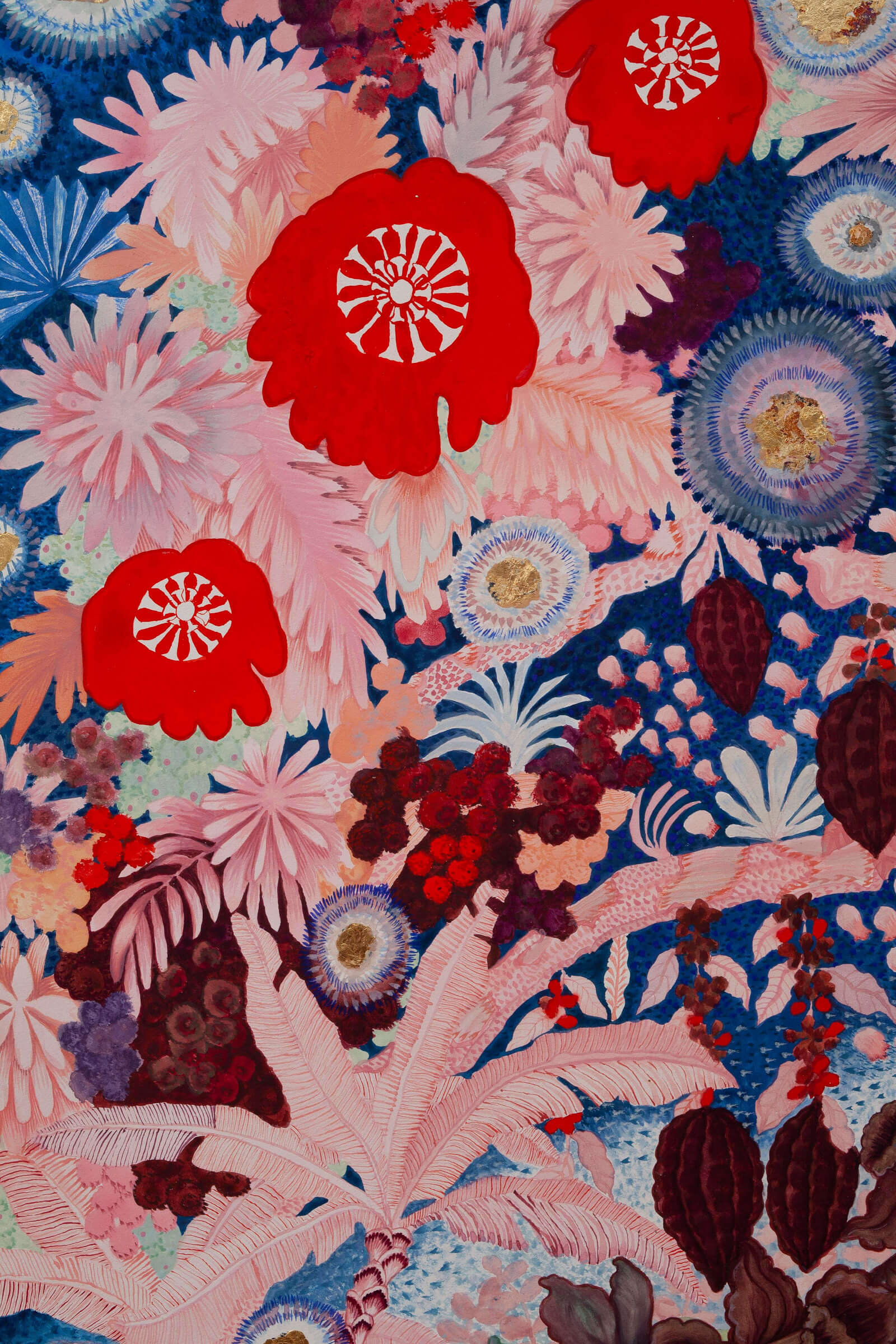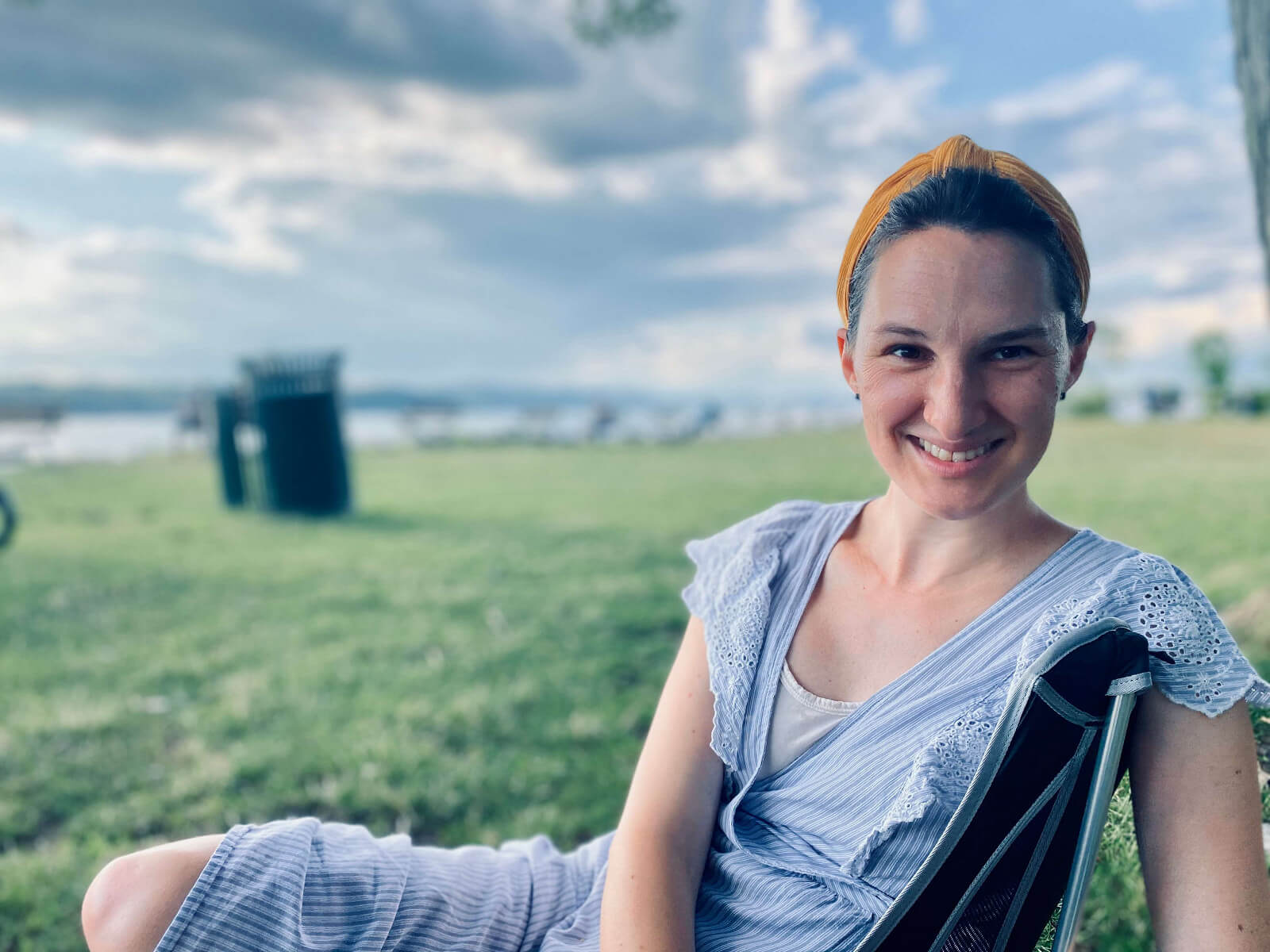Larissa Bates
Las Doñas
➝ German Press Release
➝ Download Press Release
Ever since she was a child, Larissa Bates’ everyday life has been characterised by conflicting experiences and contrasting impressions. She grew up in minimalist houses, some without electricity, with her American father, who was part of hippie subculture and had dedicated himself to a simple life, and whom she describes in El Viudo (The Widower) in particular. She thus developed an early interest in the aesthetics of the material culture around her and life in ‘normal’ homes. Though Larissa’s mother died young, her glamorous family were an immense draw for Larissa at that time. The upper class women of Costa Rica swathe themselves in colourful fabrics, shimmering jewellery and elaborate make up. The differences between the two branches of Bates’ family therefore derived not only from their ethnic origin in the different Americas; rather, they also concerned contrasting experiences of spirituality, and conceptions of class, roles, and living standards. How does one deal with having only a subliminal and confused understanding of part of one’s own family and consequently of part of oneself?
Larissa Bates’ art processes questions such as this relating to identity, belonging, and feelings of loss and ‘in-between-ness’. She herself describes her work as a kind of diary in which she records her attempts to approach them. Her use of bright gouache, glimmering gold leaf and mother of pearl creates a unique materiality in her images that results in complex floral and ornamental images. On the one hand they are reminiscent of her Costa Rican family’s lifestyle, which so captivated her as a child. On the other, the materials are also a reference to the former colonial trade routes, thus addressing the cultural interweaving in Costa Rica of European colonialism, Asian trade influences and the South American base. These multi-layered cultural implications are reflected in contemporary arts and crafts in particular, as South Americans apparently attempt to use art to gain access to the motifs and objects that have brought in to their country. This has given rise to Mexican interpretations of Japanese folding screens, named biombos, and enconchadas inspired by the art of lacquering. This kind of artistic appropriation is what ultimately inspires Bates’ paintings. Hybrid works of art never quite fit into indigenous traditions, yet they maintain a definitive point of access to the other – they are intermediaries between cultures. Bates recognises in this her own search for a way to access her foreign/familiar maternal family. This imagery that oscillates between continents and cultures becomes almost a metaphor for cultural convergence, where art provides a unique form of expression for the internal differences that are so difficult to put into words. The language of the materials and style in Bates’ paintings are the point at which her own private experiences and (artistic) attempts to gain access blend with the political dimensions of post-colonialism and the associated questions of cultural property, authenticity, hybridity and multiculturalism. However, they then immediately go beyond this in their use of humorous twists and surreal absurdity. This is how Bates’ multi-layered imagery attempts, in a very personal way, to make tangible the two different cultures within herself and her family, incorporating times and spaces, the foreign and the familiar, in equal measures in an opulent exoticisation of the self.
by Klara Niemann

Additional Information

As a result of a diverse family background, Larissa Bates was raised between Vermont and Vara Blanca, Costa Rica. Her elaborate small-scale paintings often depict family environments where the artist includes some of her relatives, mainly her aunt and grandmother, and sometimes herself. When Bates inquires into social functions of families and the role of women in creating identities, she does that from a personal point of view, but also referring to a broader cultural phenomenon. To create her vibrant, sometimes sunny, somehow dreamlike domestic scenes, Bates relies on her technical minuteness, which leads her to work as attentive to detail as a manuscript illuminator. This impression is enhanced by the materials that the artist uses: not only gouache and ink, but also mother of pearl and gold leaf.
Larissa Bates graduated from Hampshire College in 2003 with a degree in Studio Art. She has been the recipient of the Artadia Award and was a resident artist at the Lower Manhattan Cultural Council. Larissa Bates was born in 1981 and lives and works in New York. Her work is part of permanent collections such as the West Collection (USA), the 21c Museum Hotels (USA), The Howard A. and Judith Tullman Collection (USA), and the Wellington Management Collection (USA).
Photo: courtesy of the artist
